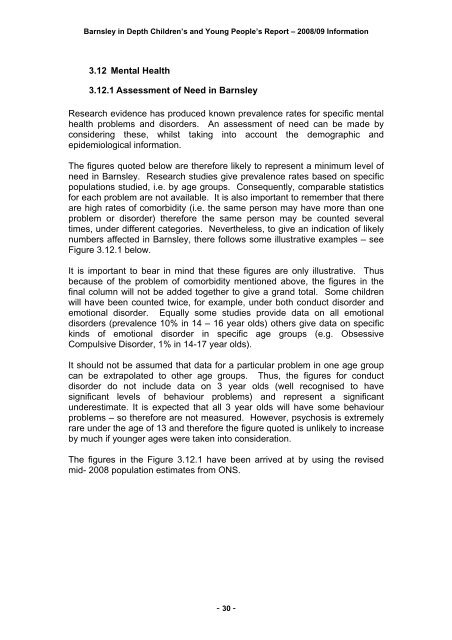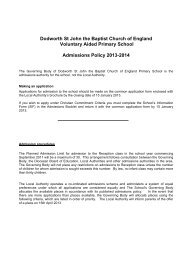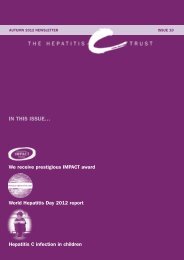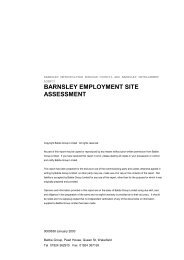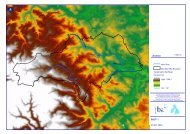Field Value Title Barnsley In Depth Children & Young People's ...
Field Value Title Barnsley In Depth Children & Young People's ...
Field Value Title Barnsley In Depth Children & Young People's ...
Create successful ePaper yourself
Turn your PDF publications into a flip-book with our unique Google optimized e-Paper software.
<strong>Barnsley</strong> in <strong>Depth</strong> <strong>Children</strong>’s and <strong>Young</strong> People’s Report – 2008/09 <strong>In</strong>formation3.12 Mental Health3.12.1 Assessment of Need in <strong>Barnsley</strong>Research evidence has produced known prevalence rates for specific mentalhealth problems and disorders. An assessment of need can be made byconsidering these, whilst taking into account the demographic andepidemiological information.The figures quoted below are therefore likely to represent a minimum level ofneed in <strong>Barnsley</strong>. Research studies give prevalence rates based on specificpopulations studied, i.e. by age groups. Consequently, comparable statisticsfor each problem are not available. It is also important to remember that thereare high rates of comorbidity (i.e. the same person may have more than oneproblem or disorder) therefore the same person may be counted severaltimes, under different categories. Nevertheless, to give an indication of likelynumbers affected in <strong>Barnsley</strong>, there follows some illustrative examples – seeFigure 3.12.1 below.It is important to bear in mind that these figures are only illustrative. Thusbecause of the problem of comorbidity mentioned above, the figures in thefinal column will not be added together to give a grand total. Some childrenwill have been counted twice, for example, under both conduct disorder andemotional disorder. Equally some studies provide data on all emotionaldisorders (prevalence 10% in 14 – 16 year olds) others give data on specifickinds of emotional disorder in specific age groups (e.g. ObsessiveCompulsive Disorder, 1% in 14-17 year olds).It should not be assumed that data for a particular problem in one age groupcan be extrapolated to other age groups. Thus, the figures for conductdisorder do not include data on 3 year olds (well recognised to havesignificant levels of behaviour problems) and represent a significantunderestimate. It is expected that all 3 year olds will have some behaviourproblems – so therefore are not measured. However, psychosis is extremelyrare under the age of 13 and therefore the figure quoted is unlikely to increaseby much if younger ages were taken into consideration.The figures in the Figure 3.12.1 have been arrived at by using the revisedmid- 2008 population estimates from ONS.- 30 -


